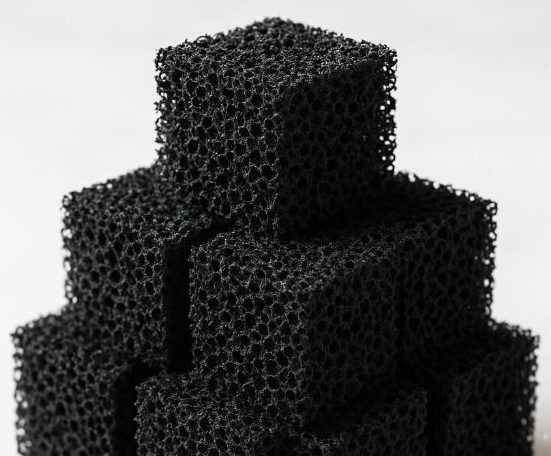Overview
c-Foam combines the high surface area of activated carbon with the flow efficiency of open-cell reticulated foam. This unique architecture promotes tortuous path diffusion and extended contact time, resulting in superior removal of oxidants and organic contaminants while maintaining a low pressure drop.
Performance Advantages
- Reduces Oxidation Agents: Effectively removes chlorine, chloramine, and ozone from water and air streams.
- Adsorbs Organics and VOCs: High-affinity carbon surfaces capture volatile organic compounds, THMs, and taste/odor compounds.
- Controls Emerging Contaminants: Engineered surface chemistries enhance uptake of PFAS, micro-organics, and pharmaceutical residues.
- Optimized Flow Efficiency: Reticulated foam structure ensures low ΔP and consistent tortuous flow under dynamic conditions.
- Customizable Carbon Loading: Carbon type, particle size, and binder system can be adjusted for specific application needs.
Technical Summary
| Property | Typical Value | Description |
|---|---|---|
| Base Material | Reticulated Polyurethane Foam | Open-cell structure, customizable porosity |
| Functional Additive | Specialty Activated Carbon | Surface-modified or impregnated grades |
| Density Range | 0.45 – 0.65 g/cm³ | Dependent on carbon loading |
| Pore Size | 30 – 50 PPI | Tuned for liquid or gaseous applications |
| Operating Temperature | up to 120 °C | Suitable for most water and air systems |
| Typical Pressure Drop | < 10 mbar (at nominal flow) | High permeability with low resistance |

